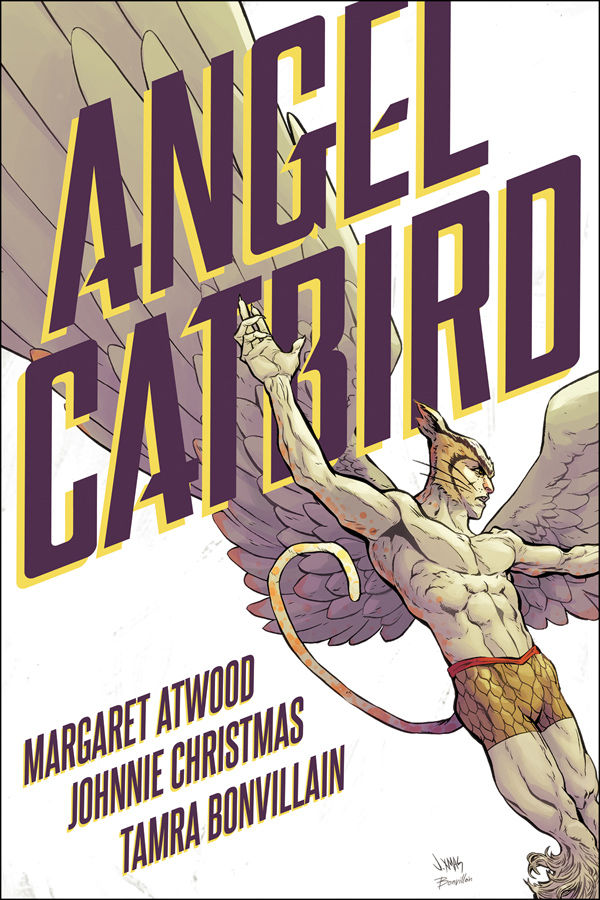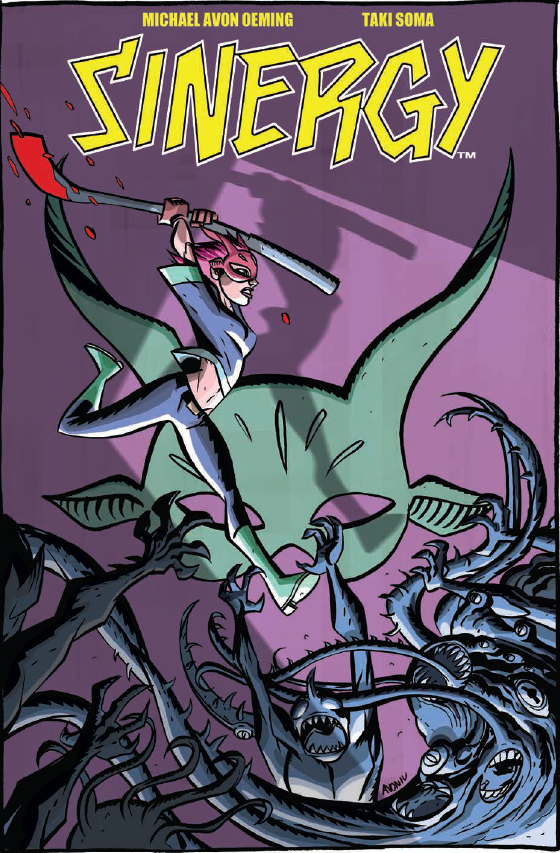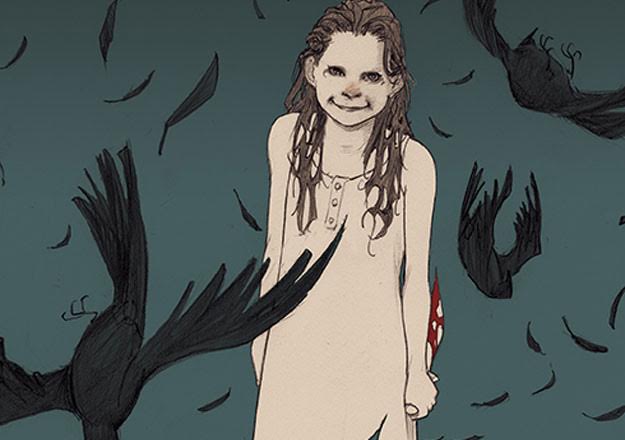Angel Catbird, Vol. 1
Release Date: September 8, 2016
Story: Margaret Atwood
Illustrations: Johnnie Christmas
Coloring: Tamra Bonvillain
Letters: Nate Piekos of Blambot
Publisher: Dark Horse Comics
NOTE: Only very mild spoilers in review.
Amazon Summary/Teaser:
On a dark night, young genetic engineer Strig Feleedus is accidentally mutated by his own experiment and merges with the DNA of a cat and an owl. What follows is a humorous, action-driven, pulp-inspired superhero adventure– with a lot of cat puns.
Michelle’s Rating: 6.5/10
Above average (good enough that I’m interested to pick up the second volume when it comes out and see what direction it goes), but not without disappointment. Let’s delve.
Storyline, Characters, Development
First, Angel Catbird is an odd story, but a lightweight sort of odd.
Odd how? Well, we’ve seen plenty of animal transformation comics, but not two animals merging with one human to make two parts animal, one part human. This atypical change was also expertly depicted by artist Johnnie Christmas. Animal transformation illustrations can be cheesy, tacky or awful if not handled with focus and tact, but Johnnie skillfully delivered for all animal transitions in the story.
Also odd is the quick introduction of other multi-part animal/human hybrids early on. There’s usually a longer “self-discovery” phase with an interlude of the main character fumbling through life with new powers without any guidance of similarly different beings. This sort of interlude appears in the graphic novel, but is drastically brief. As soon as it ends, we’re already being hastily introduced to the other hybrids. We don’t know much about the main character himself, but we already know where his loyalty stands.
This leads to my main disappointment with the Angel Catbird: the story jumps quickly to engaging the plot without even minimal backstories. Without these ever-craved backgrounds, we tend to lack emotional attachment to characters that keeps us flipping pages and buying the next volumes of the comic. But amazingly, and I believe it is because of Margaret Atwood’s seasoned writing style, the fast-moving plot does not create holes in readability, despite disappointment for lack of depth in the characters introduced. Even though I was annoyed I didn’t know much about the main character, I easily continued reading with earnest curiosity and fascination.
But that’s not the only reason the lack of backstory isn’t a deal breaker. Mostly, it’d also be ludicrous to speculate that this series will have no story background or depth just because it wasn’t in the first volume. Even if the plot advances with somewhat shallow character definition, it is not at all abnormal for later volumes to contain the necessary reflections or stories to advance character development.
On another much smaller note of personal discontent, I find that some swearing is preferable to middle school cover-up terms that are actually more distracting than helpful. Unfortunately, Angel Catbird mostly had exactly that style of faux swearing that included (literally) “Hot dang!” and “Crap!” Day-to-day swearing can be mild without being repulsively profane (such as “Damn!” or “What the hell?”) and actually help with relatability. Mostly, I just don’t remember the last time I heard someone in their (presumed?) 30s say “What the freak?”
Illustration, Lettering, and Coloring
Johnnie Christmas, who has also illustrated Pisces and Island, stays true to his own personal style in Angel Catbird. He draws with ferocity, clarity and produces true works of comic art. Probably the main difference between a lot of modern comics and Johnnie’s style is that Johnnie tends to deploy more angles and hard lines whereas other artists prefer smooth, transitional linework.
I also found that Tamra Bonvillain (colorist also for Rat Queens, Moon Girl, Devil Dinosaur) chose colors that accurately reflected the whimsy of the story: a lot of light blues, mauves, and purples. The story, as of this volume, is still only at a light, fantasy level without enough connections to drive a “dark” vibe. So while colors may not seem like a huge deal, with Angel Catbird, I firmly believe that darker colors could have inappropriately changed the entire setting and mood for the story.
Although the writer’s script informs the panels and their structure, their execution becomes a critical part of the artwork in any comic story. In the case of Angel Catbird, I found the panels and flow of both art and words to be consistent and easy to interpret.
While lacking depth (yet), the story is odd enough in just the right fantastical way to be continuously engaging and has the potential to be broadly entertaining. The art, coloring and paneling supremely add to the value of the story.
–
Volume 2 is due in February 2017!
A review copy provided was to the reviewer by the publisher, Dark Horse Comics.





